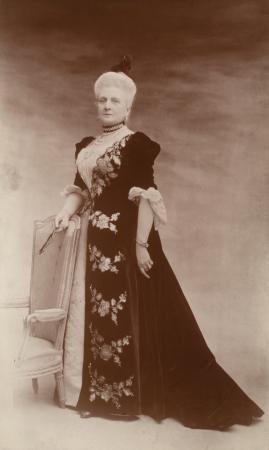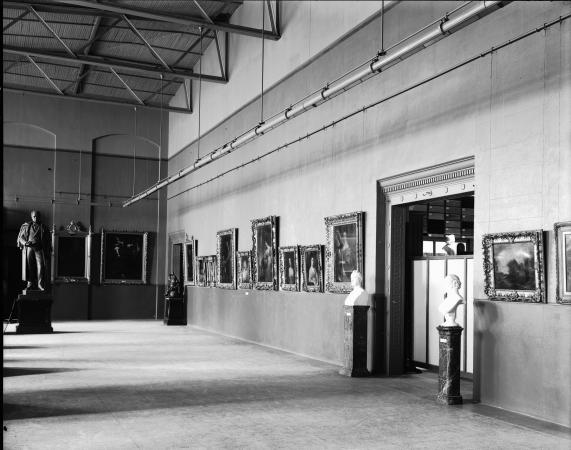The Smithsonian’s 173rd anniversary is almost here and the Smithsonian American Art Museum’s 113th anniversary has just passed, so when could be a better time to learn a little bit more about Harriet Lane Johnston? Unless you’re an American history buff, you may not recognize the former First Lady’s name. But, Johnston was integral to the foundation of the Smithsonian American Art Museum—though she never saw it come to fruition.

The Smithsonian Institution was established in 1846, after James Smithson willed his fortune to the United States to create an institution for the “increase and diffusion of knowledge.” This legally included a national gallery of art, however, fine art was not the main focus in the organization’s early history. While the Smithsonian initially had a small art collection, much of it was lost in the Castle Fire of 1865. The remnants of the disaster were transferred to the Corcoran Gallery of Art and the Library of Congress, thus no distinct national gallery was in existence. This would all change thanks to Harriet Lane Johnston’s will.

Johnston, born in 1830, was the niece of President James Buchanan. Her parents died when she was young, so Johnston was taken in as a ward of her uncle. When he was elected the first and only bachelor President, Johnston served as the First Lady. Though she was very young, Johnston was very sociable and established a strong relationship with Queen Victoria, who called her “dear Miss Lane,” and the royal family that continued until her death. After her tenure as the First Lady, Johnston married Henry Elliot Johnston. Tragically, both of her sons died very young, and, after eighteen years of marriage, she lost her husband. Despite her misfortune, Johnston traveled to Europe and Egypt extensively in her later years, adding to the art collection that she began with her husband. Her collection was small, but select, containing thirty-four objects that included paintings, sculptures, and historic memorabilia. When determining who she should leave this collection to, she settled on the Corcoran Gallery of Art, with the critical stipulation that should a United States national gallery of art be established, her collection should go there, instead.
This stipulation reignited the Smithsonian’s interest in art when Johnston passed away in 1903 and the question of whether its collection constituted a national gallery became relevant. This would be settled when the attorney general brought forth a friendly suit to the Supreme Court of the District of Columbia, where the Smithsonian’s role in American art was affirmed on July 18, 1906.

The National Gallery of Art, now known as the Smithsonian American Art Museum (SAAM), was officially established and continued to grow its collection. Due to her role in the museum’s founding, Johnston was given the nickname “First Lady of the National Collection of Fine Arts”—another previous name of SAAM—by some Smithsonian employees, including Thomas M. Beggs, a former director of the museum. Thanks to her vision of a central national art gallery for the United States, Harriet Lane Johnston ensured the establishment of SAAM.
Related Collections
1954 Smithsonian Annual Report, Smithsonian Institution Archives, Accession 98-159, Smithsonian Institution Annual Reports and United States National Museum Annual Reports, 1866-1996
Related Resources
- Early Patrons, Museum History, Smithsonian American Art Museum
- Harriet Lane as First Lady, interactive exhibit, Smithsonian National Museum of American History
- Smithsonian American Art Museum, Smithsonian Institution Archives
Produced by the Smithsonian Institution Archives. For copyright questions, please see the Terms of Use.

Leave a Comment